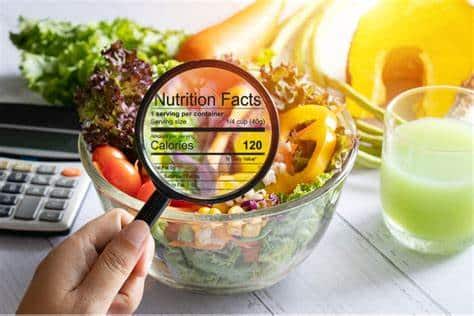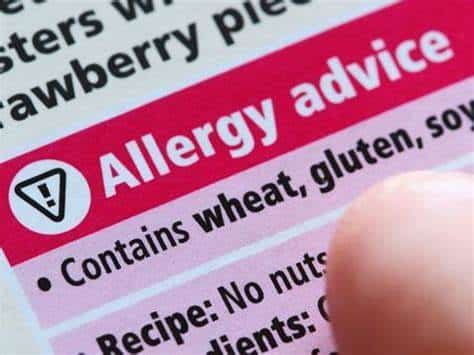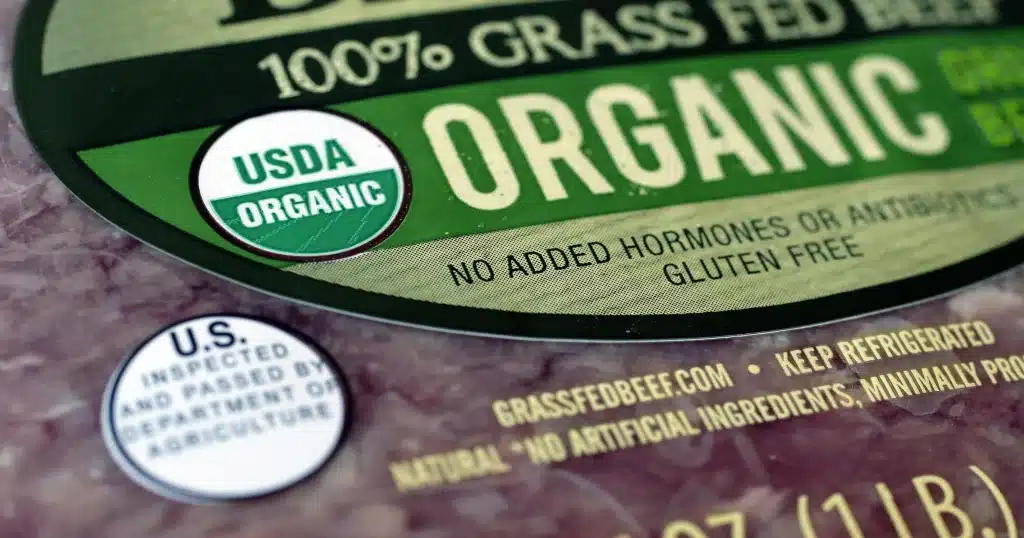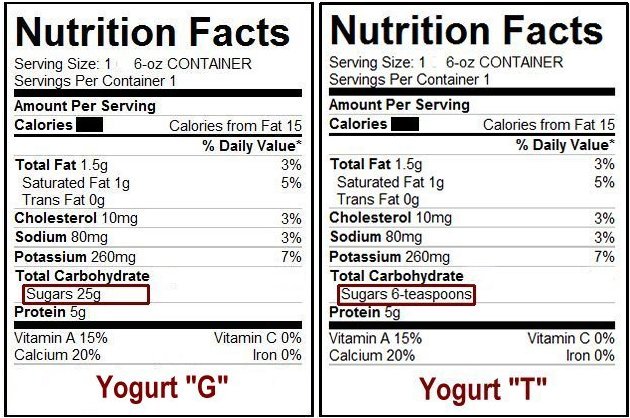Navigating the grocery store aisles can feel like decoding a complex puzzle, especially when it comes to understanding food labels. With terms like “organic,” “low-fat,” and “all-natural” thrown around, it’s easy to get lost in the jargon. The stakes are high; what you don’t know can impact your health and dietary goals and even trigger allergies. The goal of this article is to be your comprehensive guide to reading food labels correctly. By the end, you’ll be equipped with the knowledge to make informed and health-conscious decisions, turning every grocery run into a victory for your well-being.
Contents
The Basics Of Food Labels

Food labels are more than just stickers on a package; they’re a crucial source of information that can guide your dietary choices. In many countries, food labels are mandated by law to provide consumers with essential details about what they’re about to consume. These labels contain a wealth of information, including nutritional facts, a list of ingredients, and allergen warnings. Understanding these components is the first step toward a healthier lifestyle, and it’s crucial for those with specific dietary needs or restrictions.
The main components of a food label can be broken down into three categories: Nutritional facts, ingredients, and allergen information. The nutritional facts section provides data on calories, fats, proteins, and carbohydrates, among other things. The ingredients list tells you what’s in the food, usually in descending order by weight. Allergen information is vital for those with food sensitivities or allergies, as it indicates whether the product contains common allergens like peanuts, milk, or shellfish. Knowing how to read these sections accurately can be a game-changer for your diet.
Why Reading Food Labels Matters

You might wonder why there’s so much emphasis on reading food labels. The answer lies in the direct impact that food has on your health. High levels of sugar, sodium, and unhealthy fats can lead to various health issues, including obesity, high blood pressure, and heart disease. By scrutinizing food labels, you can control your intake of these substances, making it easier to maintain a balanced diet and avoid health complications down the line.
Besides health implications, reading food labels is crucial for those with allergies or specific dietary restrictions. For instance, someone with a gluten intolerance needs to be vigilant about checking labels to avoid adverse reactions. Similarly, if you’re following a vegetarian or vegan diet, you’ll want to ensure that the products you buy align with your lifestyle choices. In essence, understanding food labels allows you to make informed decisions that align with your health goals and ethical beliefs.
Decoding Nutritional Facts

When you look at the nutritional facts on a food label, the first thing that usually catches the eye is the serving size. This is the foundation for understanding the rest of the information. The serving size tells you how much of the food constitutes a single serving, and the label will also indicate how many servings are in the entire package. It’s easy to overlook this and assume that the nutritional information applies to the whole package, but that’s rarely the case.
After grasping the serving size, you can delve into the nitty-gritty: calories, macronutrients, and micronutrients. Calories give you a measure of how much energy you’ll get from a serving. Macronutrients like carbohydrates, proteins, and fats are listed next, usually in grams. These are crucial for understanding how the food fits into your overall diet. For example, if you’re on a low-carb diet, you’ll want to pay close attention to the carbohydrate content. Micronutrients like vitamins and minerals are also listed, though they’re often less emphasized. By understanding these elements, you’re well on your way to making food choices that align with your health objectives.
The Importance Of Ingredients

The ingredients list on a food label is a treasure trove of information, revealing exactly what goes into the food you’re considering. Ingredients are listed in descending order by weight, meaning the first ingredient is the most abundant in the product. This can be particularly enlightening when trying to avoid elements like added sugars or unhealthy fats. For example, if sugar is listed as one of the first few ingredients, that’s a red flag for anyone considering reducing sugar intake.
However, it’s not just about what is listed first; it’s also about recognizing harmful additives or preservatives. Ingredients like high-fructose corn syrup, trans fats, and artificial colors are often added to processed foods. These can have adverse effects on your health when consumed in large quantities. Therefore, a keen eye on the ingredients list can help you opt for foods that are closer to their natural state and less processed.
Allergen Information

For those with food allergies or sensitivities, the allergen information section is not just a part of the food label; it’s a critical safety measure. By law, common allergens like peanuts, tree nuts, milk, eggs, soy, wheat, fish, and shellfish must be clearly indicated. This information is usually found near the ingredients list and is crucial for avoiding an allergic reaction, which can range from mild discomfort to life-threatening situations.
Furthermore, it’s also essential to pay attention to statements like “may contain” or “processed in a facility that also processes.” These indicate that while the allergen may not be an ingredient in the product, cross-contamination is possible. For those with severe allergies, even trace amounts can trigger a reaction. Therefore, understanding and paying close attention to allergen information can be a lifesaver, quite literally.
Organic, Non-GMO, And Other Labels

The terms “organic,” “Non-GMO,” and other such labels have become buzzwords in the food industry, often used to attract health-conscious consumers. But what do these terms actually mean? Organic foods are grown without synthetic pesticides or fertilizers and are not genetically modified. Non-GMO stands for non-genetically modified organisms, meaning the food does not contain any genetically engineered ingredients. These labels are regulated by agencies and can offer more healthful and environmentally friendly options.
However, it’s crucial to note that just because something is labeled as “organic” or “Non-GMO” doesn’t automatically make it healthy. For instance, organic sugar is still sugar, and it can still contribute to weight gain and other health issues if consumed in excess. Similarly, a non-GMO cookie packed with sugar and unhealthy fats isn’t necessarily a better choice than its GMO counterpart. Therefore, while these labels can be indicators of quality, they should not be the sole criteria for determining the healthfulness of a food item.
The “Health Halo” Effect

You’ve probably come across food items labeled as “natural,” “low-fat,” or “healthy” and thought they must be good for you. This is known as the “Health Halo” effect, where certain words or claims give the impression that a food item is healthier than it actually is. Marketing teams are well aware of this psychological effect and use it to their advantage to boost sales. However, these labels can be incredibly misleading and are not strictly regulated.
For instance, a product labeled as “low-fat” may still be high in sugar and calories. Similarly, the term “natural” has no standardized definition in many jurisdictions, meaning it can be slapped onto almost any product. This can lead consumers to make choices that they think are healthy but are actually not beneficial in the long run. Therefore, looking beyond the front label and delving into the nutritional facts and ingredients list is crucial to get the full picture of what you’re consuming.
How To Compare Products

When standing in a grocery aisle surrounded by multiple brands of the same product, how do you make the best choice? One effective way is by comparing the price per serving or the price per weight. This gives you a more accurate understanding of the value you’re getting. However, the cheapest option isn’t always the best; you also need to consider the product’s nutritional value. A cheaper product might be more cost-effective but less nutritious, which could cost you more in healthcare expenses in the long run.
Another method for comparing products is by looking at their nutritional profiles side by side. Check the calories, macronutrients, and micronutrients to see which one aligns best with your dietary needs. Also, take a close look at the ingredients. Are they natural, or are there a lot of artificial additives? By taking the time to compare, you’re not just choosing a product; you’re making a decision that impacts your health and well-being.
Tips For Quick And Effective Label Reading

In today’s fast-paced world, spending a lot of time reading food labels during every grocery trip may not be feasible. Thankfully, there are tools and apps that can scan labels and provide a quick breakdown of nutritional information. These can be particularly useful for identifying harmful ingredients or allergens. However, it’s essential to remember that these tools should complement, not replace, your own understanding of food labels.
Even without technological aid, you can become proficient in label reading with some practice. Create a checklist of key things to look for based on your dietary needs, whether it’s low sodium, high protein, or gluten-free. Keep this checklist handy on your phone or a piece of paper, and soon, you’ll find that scanning labels becomes second nature. This way, you can make quick yet informed decisions that align with your health goals.
Master The Art Of Reading Food Labels!
You’ve journeyed through the labyrinth of food labels, from understanding the basics to decoding nutritional facts and from scrutinizing ingredients to dodging the pitfalls of misleading marketing. The ability to read food labels correctly is more than just a skill; it’s an empowerment tool for your health and well-being. By applying the insights from this guide, you’ll transform your grocery shopping experience from a guessing game into a strategic mission. So, the next time you find yourself in a grocery aisle, remember knowledge is power, and that power is now in your hands.